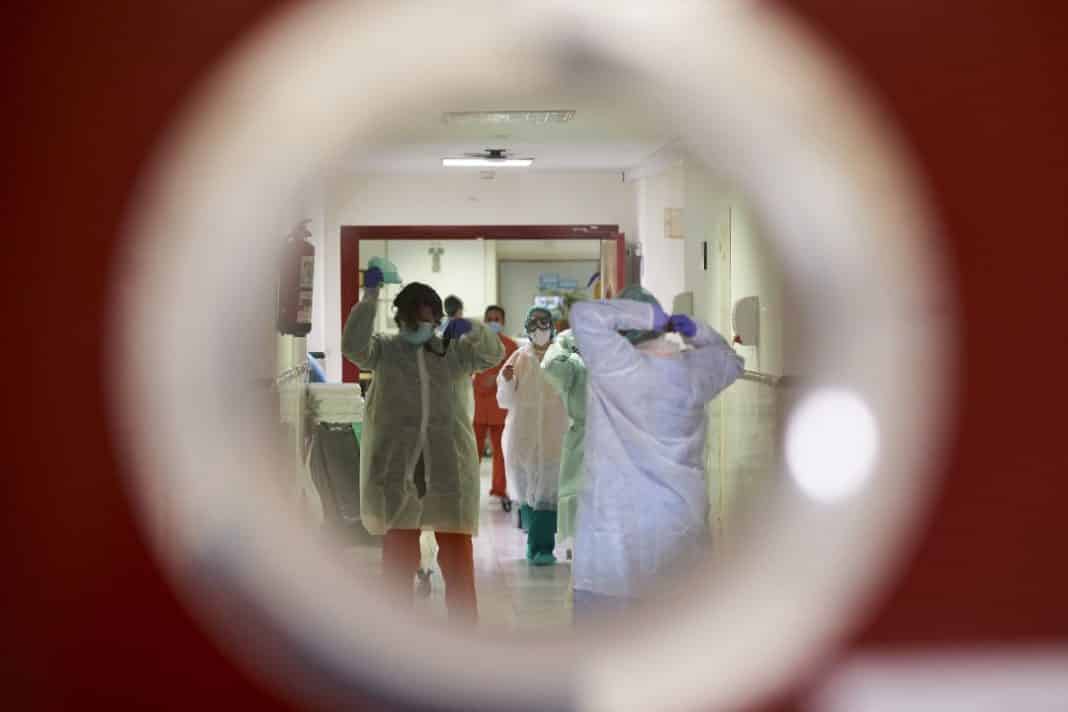- The incidence rate is 322.62 and critical bed occupancy rises 10 points in two weeks
- Pressure in Vega Baja is still far less than that experienced in the first wave.
The Valencian Community has started 2021 with the main indicators that measure the development of the pandemic at very high risk: an incidence rate of 322.62 cases per 100,000 inhabitants and a positivity of 19.84%, while the occupation of beds hospitals for covid patients is 20.57% and for ICUs 34.04%, according to the data published this Monday by the Ministry of Health.
The Valencian Community is now the sixth with the highest cumulative incidence after Extremadura, the Balearic Islands, Madrid, Castilla-La Mancha and Catalonia and is above the average, which is currently 272.22. The very high risk level is established above 250 cases.
Even so, the cumulative incidence is 68 points lower than the end of the year as on December 31 it was 390.73 cases per 100,000 inhabitants, but 46 points more than two weeks ago, when on December 21 it was 276, 31 cases.
The cumulative incidence, therefore, is 68 points lower than the end of the year on December 31 when it was 390.73 cases per 100,000 inhabitants, but 46 points more than two weeks ago on December 21 when it was 276, 31 cases.
Of concern is that hospital pressure continues to increase and 2,321 people are currently being treated on Covid wards, 20.57% of all hospital beds, while 352 patients are in the ICU, 34.04%. The very high risk threshold is set at a hospital occupancy higher than 15% and 25% for critical beds.
Situation in Regional Hospitals
Elche General Hospital has decided to fit out the Rehabilitation gym with beds to care for patients after the number of people admitted increased from 72 to more than 90 late yesterday morning, according to health sources. Eleven of them were waiting in the ER.
With 72 admissions, it had already been forced to open a fourth ward last weekend after the drip of patients has been incessant since New Year’s Eve. A further 12 people were admitted in the ICU.
Meanwhile in the Hospital del Vinalopó there are 40 patients with the virus and 13 in ICU, according to municipal sources. In total, the number of patients who, due to their condition, require 24-hour care, amounts to more than 150 people in Elche, a number higher than in April, which had marked one of the peaks in the first wave.
The situation is also getting worse in the Elda Health Department. In these first days of January, the number of patients admitted for covid-19 at the Elda General University Hospital exceeds 70, while there are another 12 critically ill patients in the ICU.
These figures are similar to those recorded in the Alto and Medio Vinalopó regions during the first week of last November. The trend shows that the curve is growing steadily again, although rather more slowly.
Health professionals believe that we are at the beginning of the third wave of the pandemic although the second has not yet been concluded. The Elda Department of Health has reactivated the anticovid protocol with more personnel.
Alcoy and Torrevieja
The Virgen de los Lirios Hospital in Alcoy had 63 covid patients yesterday, although it was expected to end the day with around 59 or 60, as it was planned to discharge some throughout the day.
Five of those admitted are in the Intensive Care Unit (ICU), according to the sources, who admitted that the situation “is not easy”, but remains under control.
At the Torrevieja University Hospital, the number of patients admitted with covid has doubled in a week: 30 on the ward and six in the ICU, although the healthcare pressure is still far from that which it experienced in the first wave.
Two new wards opened in the Vega Baja Hospital
In the Vega Baja Hospital, two floors are open for the admission of patients with Covid-19, although there is a third prepared that has not yet been brought into use, with capacity for another twenty patients.
Currently, there are 50 patients with covid admitted to the wards at Hospital Vega Baja. In the Intensive Care Unit there are 13.
The current situation, although “not good”, but is not as serious as in many other hospital centres. The same sources say that they fear a worsening this week.





